-
- • Clients three times as likely to complete virtual treatment program as face-to-face program
- • Outcomes ‘as good or better’ as at physical treatment centers
- • Private OpenSim grid operated by ReactionGrid, more stable than Second Life
Preferred Family Healthcare, Inc., is a substance abuse treatment organization with headquarters in Kirksville, Missouri and with 32 locations serving 12,000 people a year throughout the Midwest. Oh, and it also has a virtual treatment facility, on a private grid in OpenSim.
Now the organization is launching a second OpenSim grid, with a new $865,000 grant from the Center for Substance Abuse Treatment of the Substance Abuse and Mental Health Services Administration, within the U.S. Department of Health and Human Services.
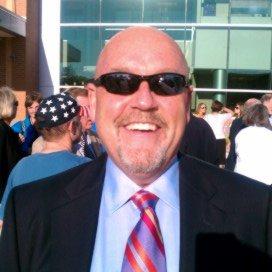
The grant will pay for three years of the project, said Dick Dillon, the company’s senior vice president for planning and development.
The grant is an outgrowth of a previous project, in which the Missouri Foundation for Health awarded the group $300,000 for a pilot project aimed at delivering substance abuse counseling to rural teenagers in Missouri.
That first grid is a nine-region world — totaling 144 acres — run by ReactionGrid, a virtual world operator and OpenSim hosting company based in Orlando, Florida. It provided treatment for 70 teenagers
The new project will focus on an older age group, young people aged 19 to 25, and will be four regions — 64 acres — to start with, said Dillon, serving up to 150 clients.
Both programs focus on clients in remote rural areas, or with transportation issues, who might have a difficult time making it to a physical treatment center.
Lower drop-out rate
The drop-out rate for the virtual program is significantly lower than the in-person program at a physical treatment facility, said Dillon.
In the physical facility, the completion rate is between 30 and 35 percent, said Dillon.
“A lot of them drop our prior to the time we think that they should,” he said.
The virtual facility completion rate is over 90 percent.
“About three times as many clients who start our virtual program finish it as clients who are in our real-life program,” he said.
In fact, some clients like it so much they don’t want to leave.
“What we found in the first version of the project was that, although our target was to serve clients on average of three to six months, we find that they like it so much they keep coming back,” he said. “They wind up staying long that we expected them to — which was a delightful miscalculation on our part.”
One reason might be that getting to the physical treatment center requires more time, and travel, than getting to a virtual facility.
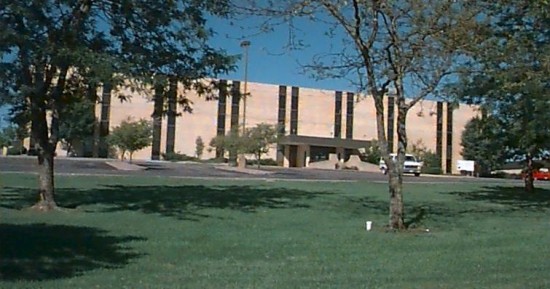
Virtual facility outcomes ‘as good or better’ as physical treatment center
The effectiveness of treatment is measured through several criteria, said Dillon. These include whether the client gets involved in the juvenile justice center or not, school attendance and grades, family evaluations, and incidents of drug use or underage drinking.
“We found that the outcomes for the virtual worlds are on par with clients who participate in real life counseling,” said Dillon. “We’ve been getting as good or better results in all categories we measure.”
Part of the reason could be is that clients spend three times as many hours in the virtual world program as in the traditional facilities.
“Our average client in the real life setting will spend about six hours a month getting either individual or group counseling,” he said. “Our virtual clients are getting an average of five hours per week.”
That’s about 20 hours a month. “That’s a much higher number of hours being spent in some therapeutic activity.”
In fact, some residents have begun an Alcoholic Anonymous group on their own initiative, that meets in the virtual world.
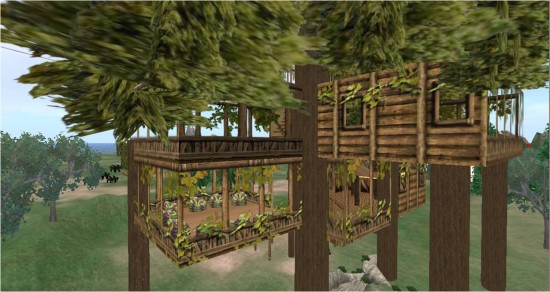
Interactivity and engagement
Dillon said that he learned a long time ago, from ThinkBalm analyst Erica Driver, that interactivity and immersiveness add up to engagement.
“That’s what we’re looking for — engagement,” he said.
As a result, though the virtual treatment center has some traditional settings, like rooms with chairs, there are also some non-traditional environments, as well.
For example, clients and counselors can hold sessions in a treehouse, around a campfire, or climb up to the top of a lighthouse for individual counseling sessions.
“It feels that you’re far away from anybody else,” Dillon said.
There is also a popular meeting place inside a giant Campbell’s soup can.
On the new grid, since there is additional funding available, Preferred Family Healthcare will invest in creating interactive role playing scenarios.
“That’s an excellent way to work with clients,” Dillon said.
For example, clients most stressful time, when they most feel like getting high or drunk, may be when they have arguments in the kitchen with their mother.
By role playing through these situations, clients develop the skills they need to deal with these situations in real life.
“It’s much easier to build a kitchen in a virtual world than in our physical center,” Dillon said.
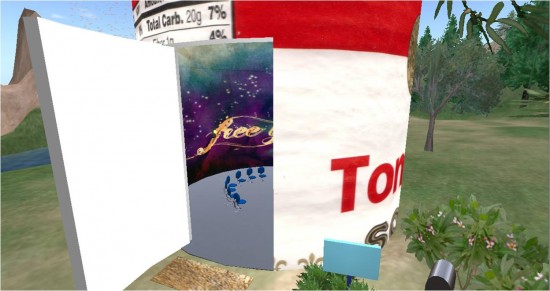
The first hour experience
Virtual environments often get a bad rap for usability. It takes time for people to download and install the software, set up accounts, and then to learn how to navigate the environment. Only a very small percentage of Second Life registrations lead to users who are engaged with the platform. The OpenSim environment is normally even more difficult to get started in, because there are fewer resources for new residents.
Preferred Family Healthcare avoids this on-ramp problem by helping each client individually get started with the platform.
“Because we’re working with clients who have already engaged with us in real life, we have time with the clients to do a personal hands-on orientation with them,” said Dillon. “We can make sure that the viewers are set up correctly, that the person has sat down with the counselor. We have an orientation pathway — that looks like a hamster Habitrail — and they walk through that and it takes them to little stations where they can learn to use their camera and learn to use chat. We make sure before they log in for their first session with their counselor, that they’ve had time with the staff and got the basics of getting around the virtual world and using the tools.”
In addition, there is money built into the grant to supply clients with laptops capable of running the virtual world software.
As a result, the organization has avoided the problem of users not having powerful enough machines to run the software.
“We’ve tried to remove most of those kinds of obstacles,” said Dillon.
Second Life versus OpenSim
Second Life and OpenSim both use the same viewers and the same user interface. Objects, scripts — even entire regions — can be moved from one platform to another. But there are some differences between the two platforms as well, in community, content, stability, scripting, backups and terms of service.
Preferred Family Healthcare is aware of the difference between the two platforms, since the organization also as a region in Second Life.
“We have a full island on the main grid,” said Dillon. The region is used to promote the organization’s offerings to a wider public, as well as offer some self-service facilities. “We have a fitness room with treadmills and weight lifting equipment, and we have a cafe.”
The organization also uses the island to hold public lectures, offer slide shows and learning experiences.
The original plan was to market addition treatment services in Second Life. With 55,000 concurrent residents totay — and substance use disorders affecting an estimated 4 to 6 percent of the population — that would mean 3,500 potential clients online at any given time.
The problem, he said, was that it was difficult to get the message out to all these residents that treatment services were available. “This led to our insight that we would be more productive at this stage by bringing in our existing clients from Missouri or Kansas to the virtual world platform,” he said. “I do think there is potential for ‘fully virtual’ encounters and subsequent service delivery, it just doesn’t make fiscal sense to devote too much time to that yet.”
In addition, the public nature of the Second Life platform was also discouraging, especially for an organization that provides mental health services.
With OpenSim, clients log in directly to Preferred Family Healthcare’s grid, and no third party is privy to the user accounts or grid content.
“All the data, all the information, all the access is controlled by our organization and there’s a high level of safety for our clients,” he said. “That ability to be compliant with confidentiality requirements and record safety is going to be more and more of an issue. Even if I had a closed-off island on Second Life, everything that happened would be recorded in Second Life and Linden Lab would have access to that.”
In addition, the grid has hypergrid turned off. That means that nobody is able to get access to the grid unless they get a user account from Preferred Family Healthcare. OpenSim allows grid operators to enable in-bound teleports from other grids by turning on hypergrid teleports, to allow inbound teleports to just selected regions, or to allow hypergrid teleports only for limited time periods, such as during construction or open houses.
The grid has tried out hypergrid, and would be interested in a version that allows grid residents to travel elsewhere — to ReactionGrid’s main grid, for example — and to return back home. But, at the same time, outsiders shouldn’t be able to enter the grid.
“The technological challenge at the time we were first doing it was too complicated,” he said. “We would like to reinstate it as we set up this new space, which is going to be separate from the project we are currently running.”
When it comes to stability, Dillon said, he hasn’t had any problems with OpenSim.
“In fact, the private grid runs more smoothly longer than Second Life does,” he said.
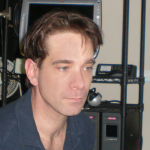
According to ReactionGrid CEO Kyle Gomboy, the stability is the result of the company’s use of “Hyper-V” virtualization which allows for each mini-grid to have its own dedicated services for users, assets and inventories.
“A large grid like Second Life has a challenge of accommodating billions of assets for 60,000 to 80,000 concurrent users,” Gomboy said. This isn’t an issue in OpenSim, where small, isolated grids run independently of one another.
“Preferred Family Healthcare is an example of that concept,” he said. “They do not handle the massive traffic Second Life does and, matched with the fact that they have their own dedicated, isolated resources, they can serve their users very well. On top of this, PFH has not overbuilt their system and works within the recommended parameters for their resources.”
Small grids that do this can outperform much larger worlds in terms of up time and reliability, he said — even when running early-stage software like OpenSimulator.
According to Dillon, the most common problem is when there’s an automatic Windows upgrade — ReactionGrid runs grids on Microsoft — and a restart is required.
“What happens most often is a counselor shows up and says, we’re having problems, and we find that Windows updated our software and shut it down,” said Dillon. “So we go in and restart it and it takes about five minutes.”
ReactionGrid, like many OpenSim hosting providers, offers a self-service panel for grid owners that allows them to do many common region management tasks without having to wait for support staff.
According to ReactionGrid’s Gomboy, there are also automated recovery tools available that will restart a region automatically if it goes down. Other OpenSim hosting providers offer similar services.
In addition, there are no age limitations in OpenSim.
“We work in real life with people from age 12 to 80,” said Dillon.

There is also the issue of price. All the OpenSim regions cost together as much as two islands in Second Life, said Dillon. He pays around $1,100 for an entire year to ReactionGrid for a private, dedicated server running his nine-region grid. By comparison, Second Life, even with a non-profit discount, is around $1,800 for a year for just one island.
“We’re getting lots of geography at a reasonable price, on a private server,” he said. “We could not run nine sims in Second Life for the money we’re paying for the OpenSim platform.”
Second Life does have a couple of advantages technically over OpenSim, including the media-on-a-prim feature that was rolled out with Second Life viewer 2 this spring, and in-world voice from Vivox.
OpenSim rolled out support for media-on-a-prim this summer.
“We’re going to be able to do that on our newest grid,” said Dillon. Meanwhile, his organization used slideshows and other work-arounds.
For voice, the organization used an alternative called Freeswitch, which isn’t nearly as good as Vivox in clarity or performance. However, a new voice system is currently being developed, the Whisper-Mumble combination, which sounds and works as good as Second Life’s Vivox. It is expected to be widely available in OpenSim later on this year.
However, voice issues haven’t been a big problem for the group, Dillon said.
“We find that a large percentage of the time, we are using text chat, because we go with the lowest common denominator — if anybody involved is unable to use voice, then nobody uses it,” he said.
For example, a teenager may be logging into the virtual world from the local public library or a cafe which offers free WiFi. In that setting, it would be a problem to talk into a microphone.
The final technical difference between Second Life and OpenSim lies in vehicle physics scripting. While most scripts transfer easily from Second Life to OpenSim and require little or no modification to work, those that involve vehicle interactions might need to be rewritten, or might not work at all.
Since Preferred Family Healthcare doesn’t use vehicles, however, this hasn’t been a problem.
“We haven’t suffered from the loss of something we’ve never had,” said Dillon.
Content
Preferred Family Healthcare might not need to have access to Second Life’s user base, but access to Second Life’s content would be nice.
Instead, the group had to find alternative sources for clothes and common objects.
For example, ReactionGrid provided a library of clothing and other supplies.
Dillon and his team were able to bring in objects from Second Life that they created themselves by using Second Inventory.
In addition, the Fashion Research Institute donated items.
FRI provided two full avatars in six skin tones for male and females, with multiple facial hair and makeup options, as well as a range of additional clothing, jewelry, shoes, and hairstyles. All skins have been created for a PG audience.
“High-quality avatar customization content can help assure the success of any immersive effort because the process of customizing an avatar aligns users with this digital representation of themselves,” said Fashion Research Institute CEO Shenlei Winkler in a statement.
When hypergrid is enabled, grid managers can also teleport to locations on OSGrid and other grids where buildings, furniture, clothing and accessories are available for free or for sale (list of hypergrid shopping destinations is here). Some starting content for grids has also recently become available through the Diva Distro inventory archive.
For the most part, though, Preferred Family Healthcare was on its own.
“We did most of the building and terraforming ourselves,” Dillon said, though one outside volunteer designer was brought in to do one of the regions.
But he didn’t mind.
Dillon got hooked on building in Second Life, where he had been a resident for a year and a half before launching his organization’s grid in November of 2008.
Today, he frequently finds himself looking at something in the physical world and saying to himself, “I can build that in six prims.”
He got so interested in creating virtual furniture that he started subscribing to interior design magazines for ideas.
“I’ve got all these pages ripped out of magazines of chairs and couches and whole rooms that I want to build.”
In addition, there is one section of the grid where building is open to everyone.
“One kid built a skateboard park,” Dillon said. “Some of them are learning how to make their own T-shirts, things like that.”
- OSgrid back online after extended maintenance - April 16, 2025
- Analysts predict drop in headset sales this year - March 25, 2025
- OSgrid enters immediate long-term maintenance - March 5, 2025
